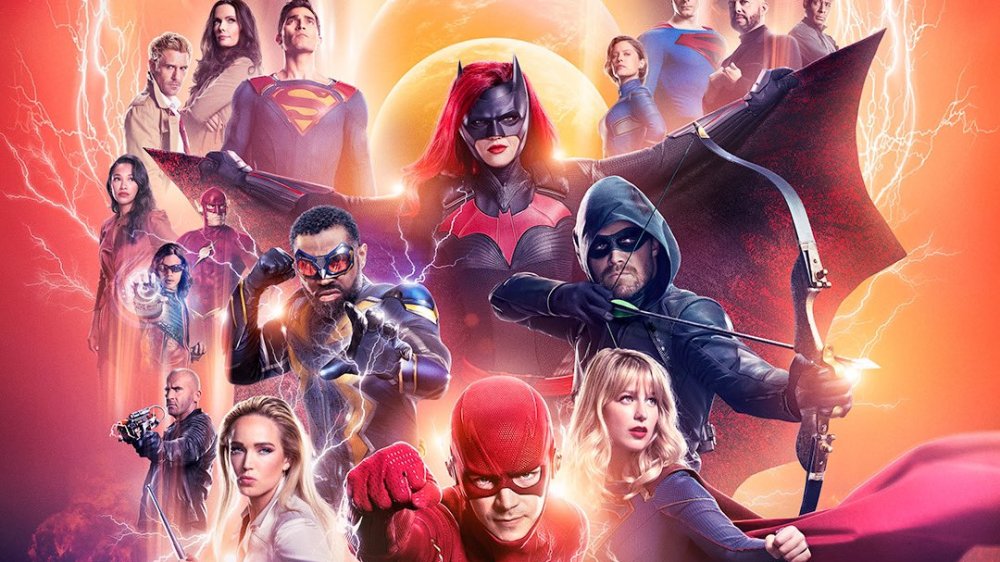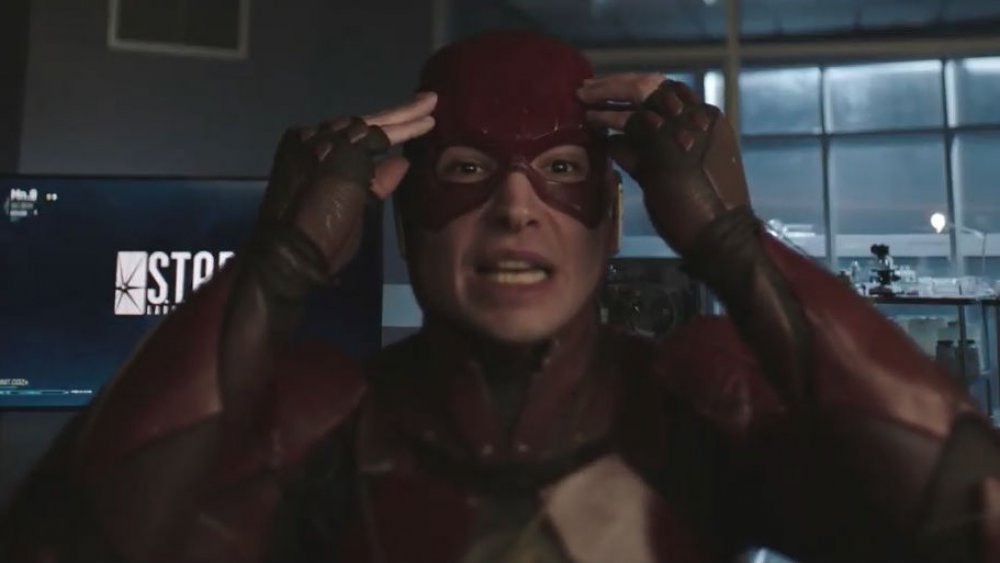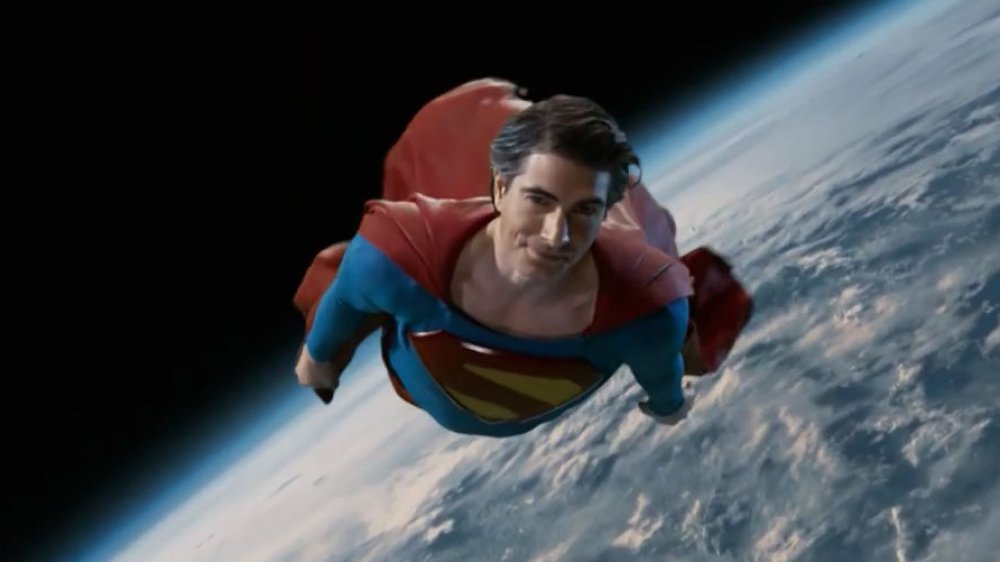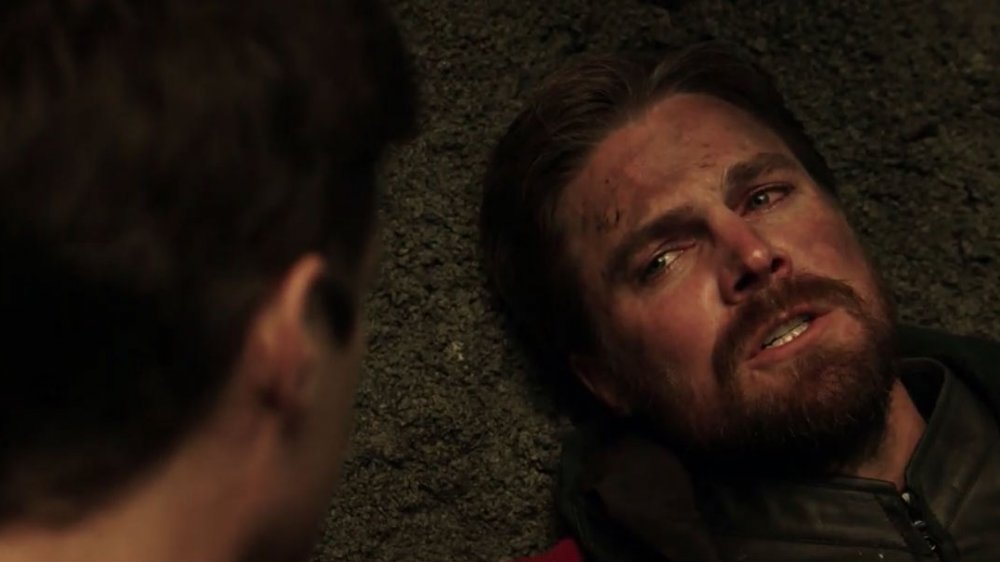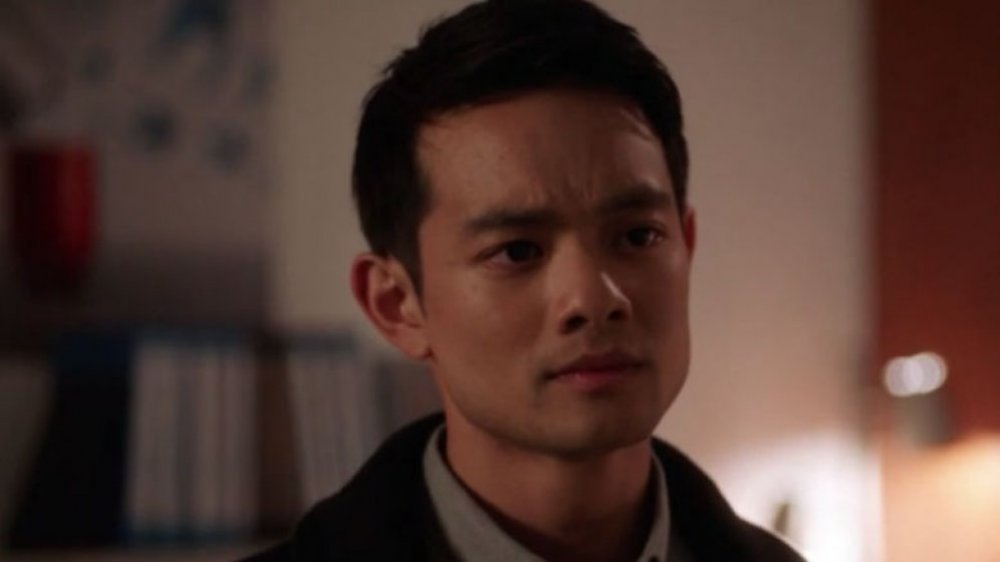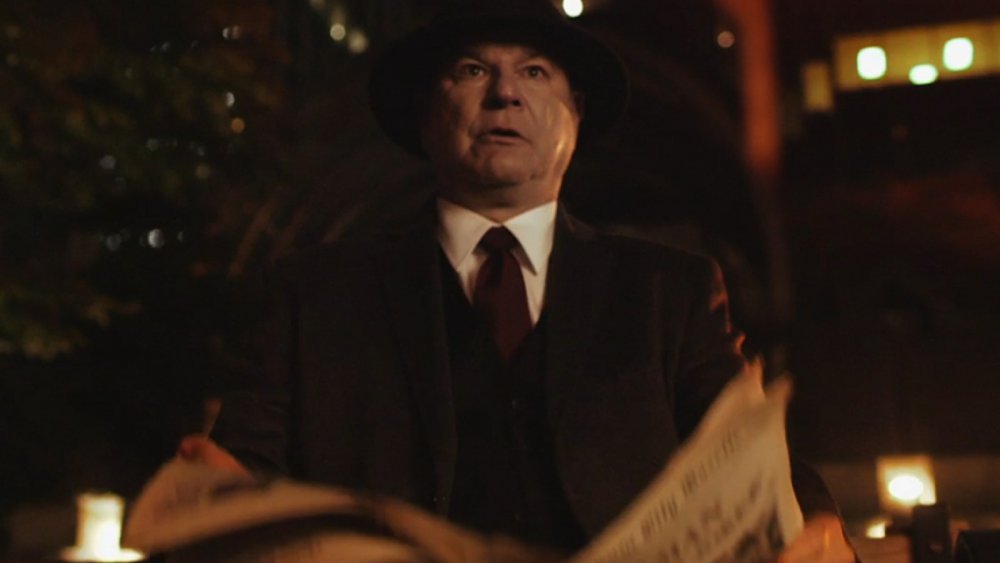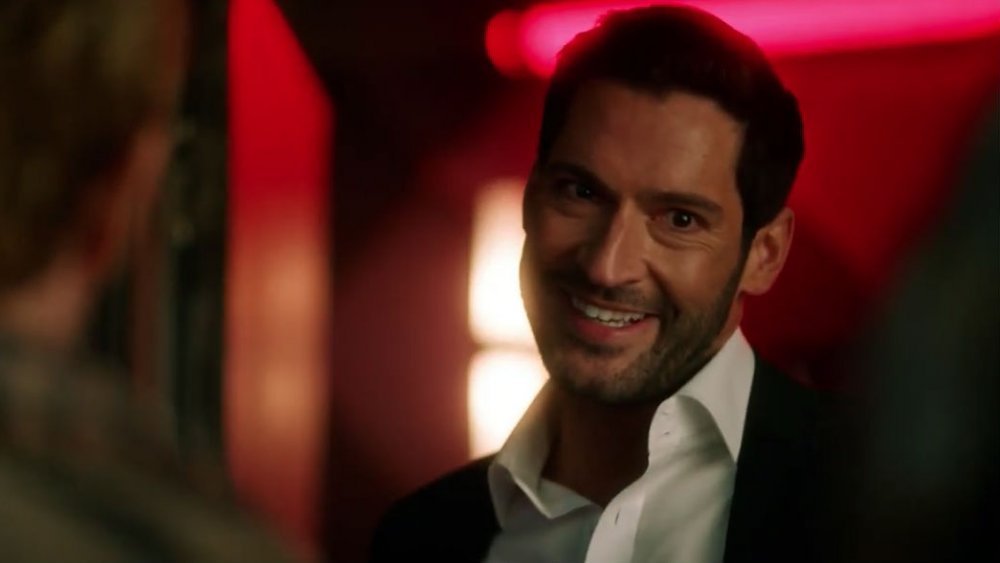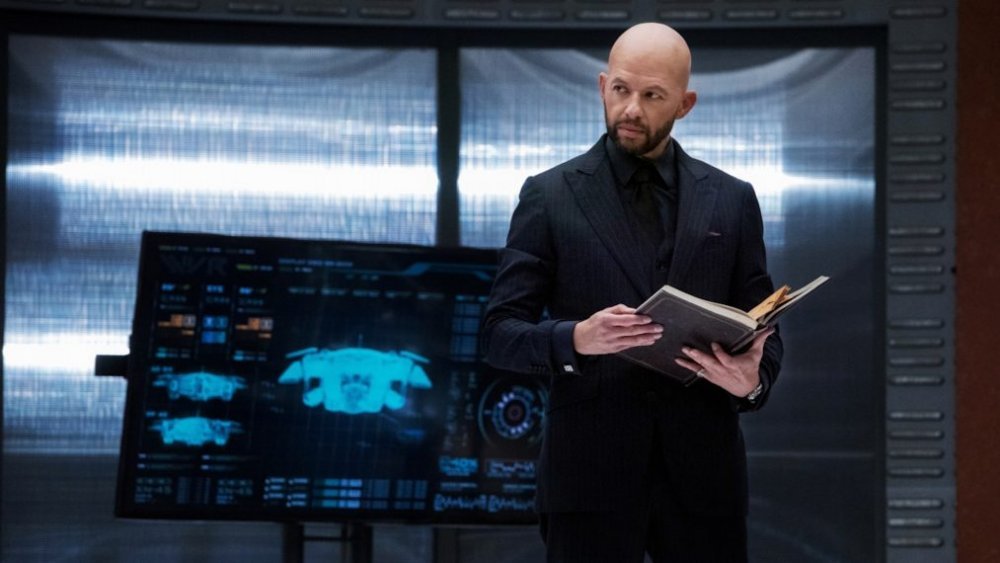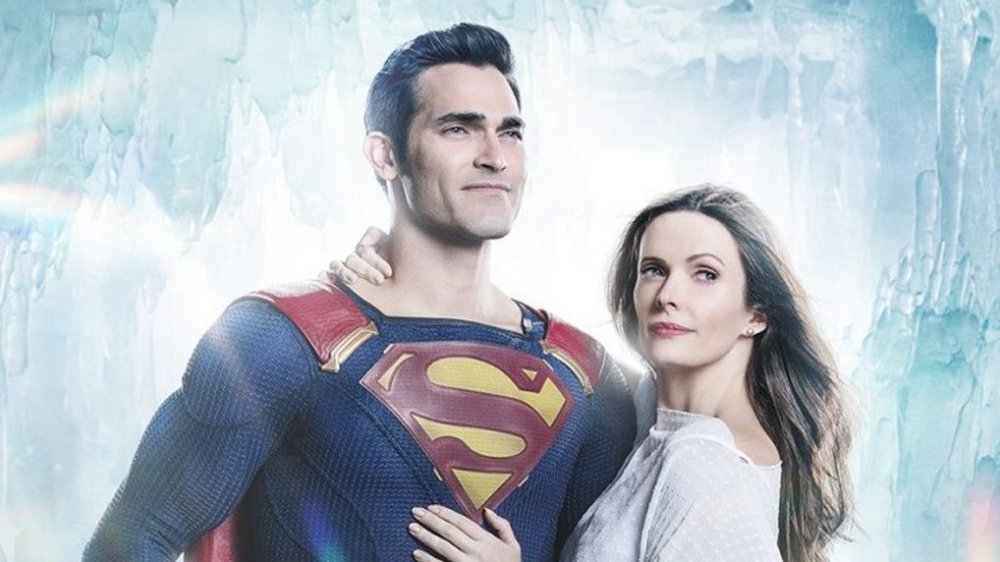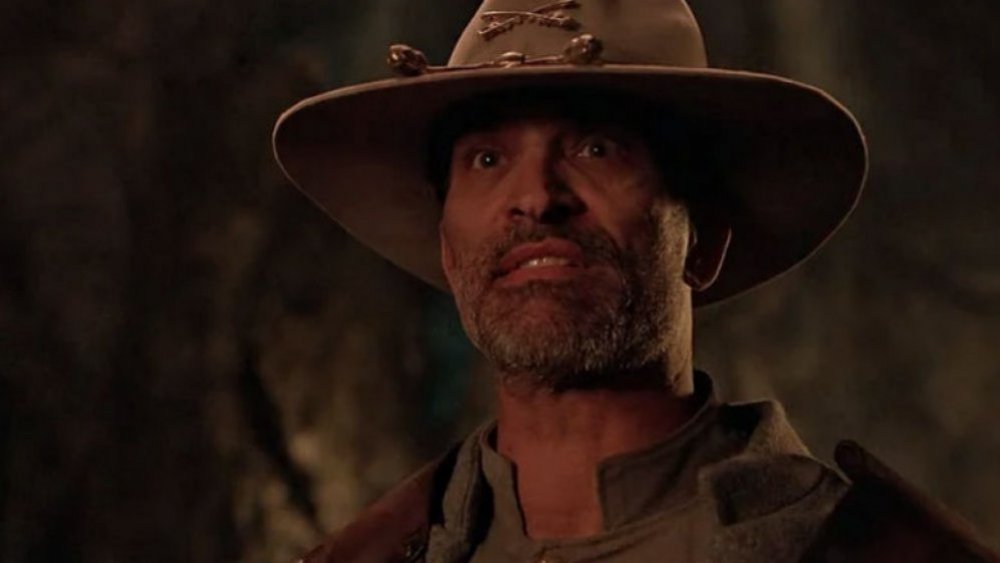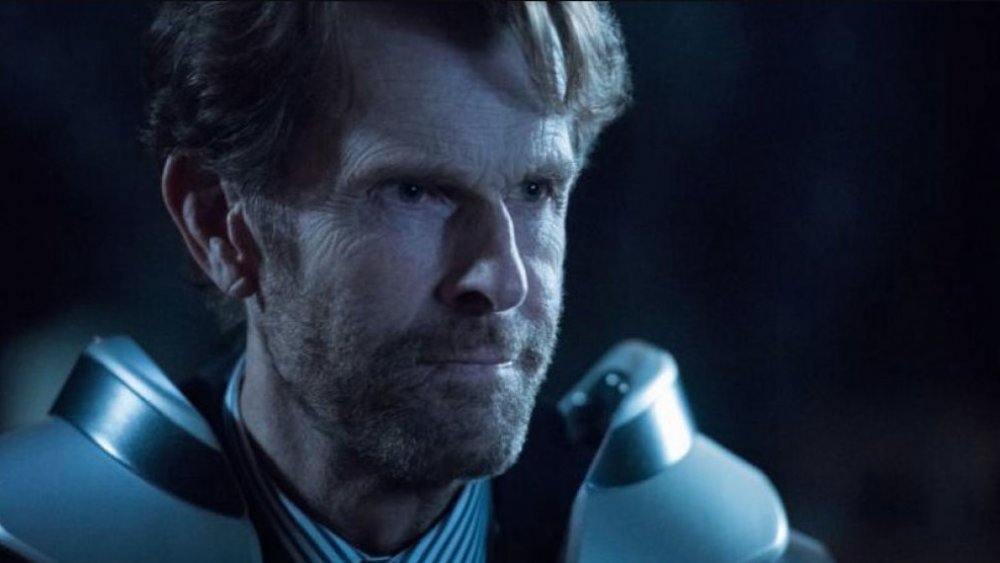The Biggest Unanswered Questions In Crisis On Infinite Earths
Warning! SPOILERS for the CW crossover event Crisis on Infinite Earths follow!
Well, it's finally over. The CW's Crisis on Infinite Earths – combining the stories of Arrow, Batwoman, Black Lightning, The Flash, and Legends of Tomorrow – has concluded. The heroes' combined efforts defeat the Anti-Monitor, though Oliver Queen is forced to once again sacrifice himself. The multiverse is restored, but it doesn't look exactly the same. While previously some of the series' heroes lived on different, alternate versions of Earth, now all the heroes of the Arrowverse have been brought together on Earth Prime. The fusion allows them to finally form a group that looks like the Justice League without having to contact each other across dimensions.
We'd be kidding if we claimed all our questions have been answered. The reality-warping nature of Crisis on Infinite Earths brings up loads of questions about not only the Arrowverse, but the worlds beyond the CW's series. By the end of Crisis, the story has given us peeks at the narratives of almost every live-action DC comics adaptation. And considering the multiverse is annihilated at the end of Part 3 of Crisis and reborn into something different at the end of Part 4, there's no way for us to know exactly what kind of multiverse we've been left with.
Some of these questions may be answered in the coming months, and some may never be answered at all. Regardless, here are the biggest unanswered questions we have about Crisis on Infinite Earths.
How was that awesome Flash cameo possible?
The first three parts of Crisis bring some incredible cameos, but the one that lit the internet on fire was saved for Part 4 — Ezra Miller, who appears as the Flash in 2017's Justice League along with cameos in other films, comes face-to-face with Grant Gustin's CW version of the character as the latter is traveling through the Speed Force. Neither of them have any idea of how the meeting is possible, and the movie Flash in particular seems completely oblivious, though the pair get a somewhat awkward moment appreciating each others' costumes.
As the TV Flash says, this shouldn't be able to happen. At this point the multiverse has been annihilated by the anti-matter wave. So if the DCEU films are meant to take place in the same multiverse as the Arrowverse, the movie Flash should be wiped out along with the rest of that Earth's heroes.
One possible explanation is that time in the Speed Force doesn't work the same as it does on Earth. We've already seen this is the case in previous seasons of The Flash. So, as confusing as it may seem, it could be the movie Flash entered the Speed Force before the multiverse's death and the Force's strange relationship with time is allowing him to meet the TV Flash after the end of all things.
Regardless of how it happens, the moment is likely to remain a fan-favorite scene for years to come.
What's up with the Superman of Earth-96?
One of the coolest things about Crisis on Infinite Earths is the reprisal of Brandon Routh in the role of Superman. In earlier chapters of Crisis he plays the Superman of Earth-96, who is largely based on the 1996 miniseries Kingdom Come. Routh's Earth-96 Superman has earned some gray hairs and his costume insignia incorporates the color black — something uncommon for the character outside of Kingdom Come. He's killed by Lex Luthor at the end of Crisis Part 3, but by the end of the event we learn the restoration of the multiverse has resurrected the hero.
During the resolution of Crisis Part 5, we see snapshots of other corners of the multiverse, including Earth-96. We find a smiling Superman flying in orbit over the Earth. Interestingly, his costume has changed. The black of his trademark insignia has been replaced with yellow, and overall his costume looks much more like the one Routh wore in 2006's Superman Returns.
We don't know if the change is a conscious choice on Superman's part or a result of the changes in the multiverse. One possibility is that it's meant to signify the character has found some peace. When he's asked about the black in the costume earlier in Crisis, he says it symbolizes that there's hope even in the darkest of times. Perhaps this version of the Man of Steel no longer finds himself in the darkest of times, and decided to let it show.
What happened to the Spectre?
Oliver Queen dies a second time at the end of Crisis on Infinite Earths Part 4, and this one might just stick. With the powers of the Spectre, Queen dies battling the Anti-Monitor and helping to restore the multiverse. His sacrifice is lamented by all the heroes in Part 5, and the President of the United States calls for a moment of silence in honor of his deeds.
Even if we accept this is, finally, the end of a character who has already died and come back multiple times in the history of the Arrowverse, we're left with the question of what happened to the Spectre.
We don't know a lot about the Arrowverse's version of the Spectre. He's introduced in Crisis Part 3 when James Corrigan approaches Oliver Queen in Purgatory about acting as the spirit's new host, and by Part 4 Oliver has assumed his new role. In the comics, the Spectre is the physical embodiment of the wrath of God and one of the most powerful superheroes of DC. If the Spectre of the CW is similar to that of the comics, the death of Oliver Queen would likely not mean the death of the Spectre, but instead the spirit would need a new host. So, did the Spectre find one? Did it go back to James Corrigan? Or is it possible Oliver isn't dead, and will continue to act as the Spectre in the shadows?
Is Ryan Choi destined to become the next Atom?
Crisis Part 3 introduces us to Ryan Choi, the Paragon of Humanity. He's one of the only Paragons to be introduced in Crisis, at least as far as the Arrowverse is concerned. But DC Comics readers are more familiar with the name.
Choi famously replaces Ray Palmer as the shrinking hero Atom in the short-lived All-New Atom comic. While Choi's solo series didn't last, he's remained a hero in the DC universe, most recently being recruited into an eccentric Justice League of America lineup that included the reformed villain Killer Frost and the alien bounty hunter Lobo. His appearance naturally had fans wondering if he'd be joining the super-powered club by the end of Crisis, but Part 5 concludes without Choi obtaining any shrinking powers or a suit of armor similar to Ray Palmer's.
But that doesn't mean Choi couldn't play a larger role in the Arrowverse's future, and possibly as another version of the Atom. As soon as we meet him in Crisis, he makes it clear he's familiar with Ray Palmer's scientific breakthroughs and it's Choi who comes up with the idea of making a device that will neutralize the Anti-Monitor by making him shrink infinitely. Whether or not this is a sign of things to come, only time will tell.
What about the rest of the multiverse?
Crisis Part 5 ends with the multiverse restored, but not exactly as it used to be. The various heroes of the different CW Arrowverse series existed on a few separate Earths before Crisis, but they now share the same world — Earth Prime. At the end of the episode, when we visit different spots in the multiverse that have been saved, we revisit the Superman of Earth-96 who has undergone some costume changes. What about the rest of the multiverse? We don't revisit Earth-89, where we saw Robert Wuhl reprise the role of intrepid Batman-hunting reporter Alexander Knox. We don't get another visit with the Robin of Earth-66. And we don't see the fate of Earth-167, where the events of Smallville take place.
It's likely we won't see most of those worlds again in the Arrowverse series, and really, that's okay. After all, it's unlikely anyone's going to go back and edit 1989's Batman because of the CW's Crisis crossover. What could have an impact on the Arrowverse going forward are some of the alternate Earths we visited before Crisis. For example, there's Earth-X, which the CW heroes helped fight against Nazi rule in the 2017 crossover Crisis on Earth-X. Characters from The Flash have actually dated characters from alternate Earths. Do those worlds remain intact? What about Earth-90, which was destroyed as part of the 2018 crossover Elseworlds? Was the Barry Allen of the '90s Flash show resurrected as part of the multiverse's restoration?
What did Constantine do to earn a favor from Lucifer
In Crisis Part 3, Constantine, Diggle, and Mia travel to Earth-666 as part of their quest to resurrect Oliver Queen. There, we meet Tom Ellis' Lucifer Morningstar from the series Lucifer. From their back and forth it's clear Lucifer and Constantine have had dealings before, and in particular Lucifer says something which has had fans of the Arrowverse and Lucifer scratching their heads, telling Constantine, "I owe you for Maze." Maze, or Mazikeen, is a regular character on Lucifer played by Lesley-Ann Brandt. She's a demon who used to be the most feared torturer in all of Hell.
But by the end of Part 5 we get no indication of exactly what Constantine did for Maze and Lucifer. Not even Lucifer showrunners Joe Henderson and Ildy Modrovich know what the former monarch of Hell was talking about. They told EW the line was as much a surprise to them as it was to the fans. If the issue is ever to be addressed on Lucifer, it will have to be in its upcoming fifth and final season. Otherwise, Lucifer and/or Maze will have to make one more visit to the Arrowverse, or fans will be left to wonder.
How did Lex become the good guy?
Early in Part 5 of Crisis, we learn one of the biggest changes in the restored multiverse is that only Supergirl and the other Paragons remember Lex Luthor as being the villain we all know he is. When Supergirl first awakens in the new Earth Prime, she's late to cover Lex being awarded the Nobel Peace Prize and we soon learn he's somehow the head of the D.E.O. Even close allies of Supergirl, like her sister Alex, look up to Lex as some kind of benevolent philanthropist.
The most likely answer to how this came to be is that it was by Lex's design. Just before Oliver Queen's confrontation with the Anti-Monitor and the formation of the new multiverse, Lex reminds the other Paragons he still has a piece of the Book of Destiny which he'd previously used to murder the Superman of Earth-96 and take his place. With the remaining pieces of the Book of Destiny, coupled with his own intellect, Lex may have figured a way to consciously will himself into a new role on Earth Prime.
Regardless of how he did it, Jon Cryer's been a hit in his portrayal of one of DC's chief villains, and it's good to know Crisis is unlikely to be the end of his time as Lex Luthor.
Who are Lois and Clark's sons?
Toward the end of Crisis Part 5, Lois Lane drops a bombshell — and Tyler Hoechlin's Superman seems just as surprised as the rest of us. Lois calls Superman as he's flying through the clouds and tells him he needs to get to Metropolis, saying simply, "It's the boys." When Clark, confused, says "The boys?" Lois answers "Yeah, honey. Your sons?" Superman dives toward the Earth, presumably on his way home, but we never get to see these boys for ourselves.
The last time we left them, Superman and Lois had one child, Jonathan. The newborn lends some much needed humor to exposition scenes with The Monitor, as he keeps interrupting the alien's portents of doom with his crying. But somehow the restoration of the multiverse has given Lois and Clark at least one more son. This is a departure not only from the pre-Crisis CW, but from the comics. Jonathan is the son of Lois and Clark in the comics — though he's the teenage Superboy and a member of the Legion of Super-Heroes — but he's an only child.
It's an interesting twist that's sure to cause the pair complications down the road. We'll likely learn who these sons are, how many there are, and whether they've inherited any of their father's abilities either in future episodes of Supergirl or in the series Superman & Lois, in which Hoechlin and Elizabeth Tulloch star as the couple.
Was Sara Lance really the one who gave Jonah Hex his scar?
In Crisis Part 2, the heroes encounter the earlier version of a cowboy anti-hero they've had dealings with in the past — Jonah hex, played by Johnathon Schaech. They're confronted by Hex in a mine on Earth-18 where they're looking for a Lazarus Pit to resurrect Oliver Queen. Sara Lance and Mia fight and overpower Hex, who as of yet doesn't have his trademark scar. When Jonah, restrained by Sara, refuses to yield and give them permission to be in the mine, Sara says "Guess you were going to get this scar eventually," and cuts into his face with a knife.
In the comics, Hex's scar comes from a fire and it doesn't look like an injury that a knife would cause all on its own. If this is actually meant to be the event that marks Jonah Hex for good, the fact that the multiverse essentially gets a big reboot might undo it. Hex doesn't appear at all after Part 2 of the event, so as of yet we have no idea whether or not he still has Sara to thank for his good looks.
What corrupted the Batman of Earth-99?
In Crisis Part 2, Batwoman and Supergirl travel to Earth-99 where they believe they can find the Paragon of Courage — that world's version of Batman. Instead, they find an old, broken Bruce Wayne who is content to let his world and the rest of the multiverse die. We learn at some point this version of Batman crossed the line and killed one of his enemies, after which killing eventually became his default. He even killed his world's version of Superman.
But we never learn what it was that pushed Batman over the edge. We get a few dark details, but they all seem to have happened after he went rogue. He mentions the Batwoman of Earth-99 died, but this looks likely to have happened after Batman went bad, because Bruce says his Kate first became Batwoman because she "thought she could succeed where I failed" — implying he'd already been corrupted before she even became a hero. His final battle with Superman would be an unlikely source, considering he would have already gone down a much darker road in order to become Superman's target.
If we absolutely had to guess, then it seems a good bet it was the Joker who finally drove the Dark Knight to cross the uncrossable line. We know the clown has brought other versions of Batman close to the brink before. Still, the Bruce Wayne of Earth-99 dies without ever mentioning specifics, so we'll probably never know for sure.
